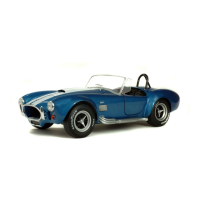3. Carn Loading. The cam faces of the cross pins which engage vee
slots in the differential case halves, impose a loading on the cross pins
along the axis of the differentia! when torque is transmitted by the differen-
tia! assembly. This re-action is transmitted to the side gear clutch rings
through the abutment shoulders on the differential pinion mates.
(
THE PINION MATE SHOULDER
TRANSFERS THE LOAD TO
THE SIDE GEAR RING
THE SIDE GEAR RING LOADS
THE CLUTCH PACK AGAINST
THE DIFFERENTIAL CASE
(~
THE SIDE GEAR RING LOADS
THE CLUTCH PACK AGAINST
THE DIFFERENTIAL CASE
CROSS-PIN MOVES UP THE RAMP OF
THE V-SLOT IN THE DIFFERENTIAL
CASE
CAM LOADING
OF
FRICTION CLUTCHES
OPERATION
(
Under all normal driving conditions, the optimum balance between
free differential action and frictional restraint of same is obtained due to
the loading of the friction clutches by the combination of the differential
gear separating forces and the cross pin cam loading. Since both these
methods of loading are proportional to the torque transmission, there will
be appropriate division of torque between the clutches and the differential
gears. Under extreme conditions, however, when one wheel is on a
surface giving extremely low or zero adhesion, it is necessary to provide
additional torque bias, since the loading provided by the cam and gear
forces depends upon there being a minimum degree of re-action at each
axle shaft In these circumstances, effective action is provided by the
loading of the clutch packs by the Belleville springs.
It should be emphasized that the Powr-Lok design is unique, since
the supplementary cam loading, in addition to the pressure on the clutch
packs from the differential gears, makes it possible to use the minimum
number of clutch plates, resulting in a compact assembly. It is also possi-
ble to utilize plates with comparatively low friction characteristics which
can be maintained throughout the service life of the unit, hence the claim
for durability.
POWR-LOK
Will prevent a vehicle from becoming immobile when onedriving wheel
loses traction.
Provides vehicle stability under adverse road conditions.
Controls wheel spin and resultant shock loads.
Reliable and effective throughout the service life of the vehicle.
7

